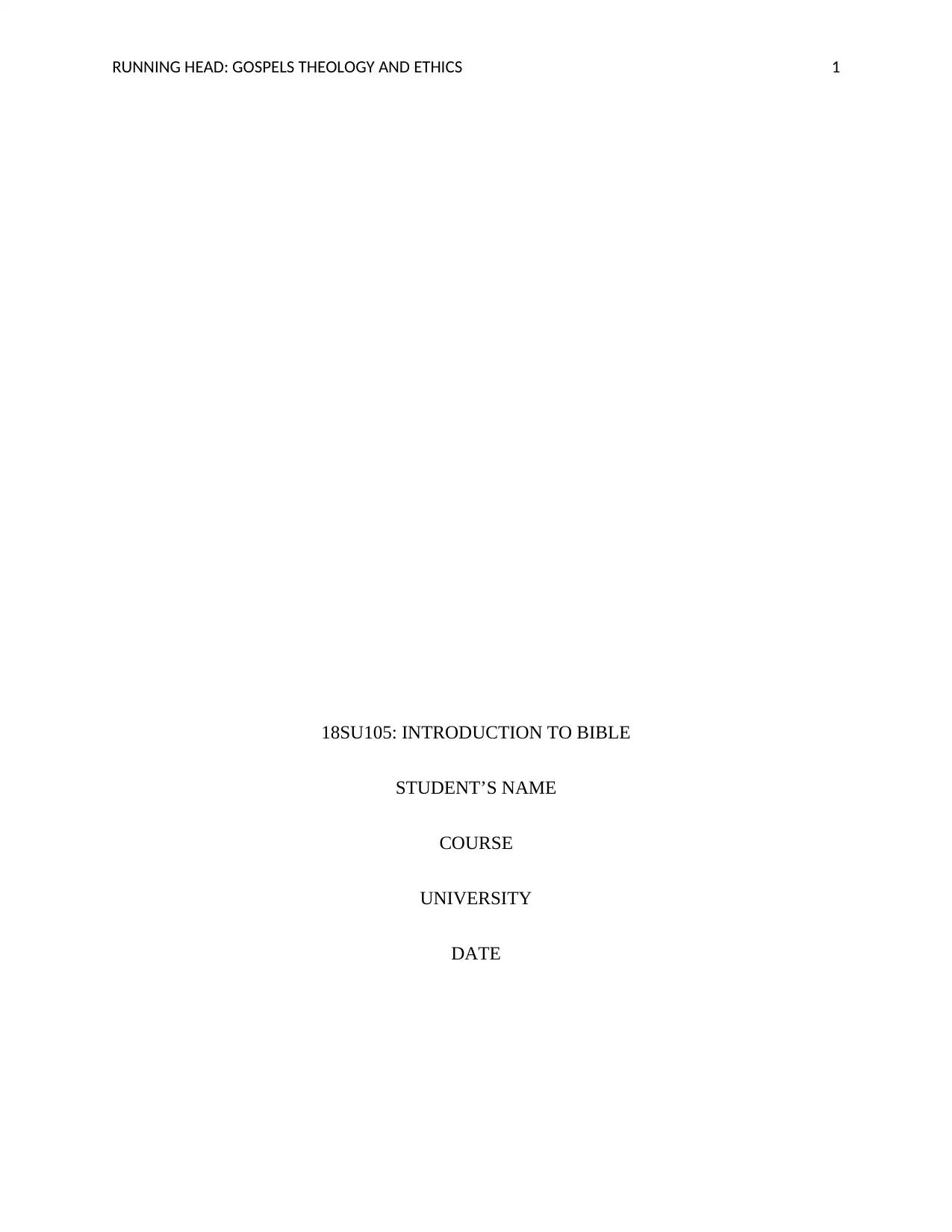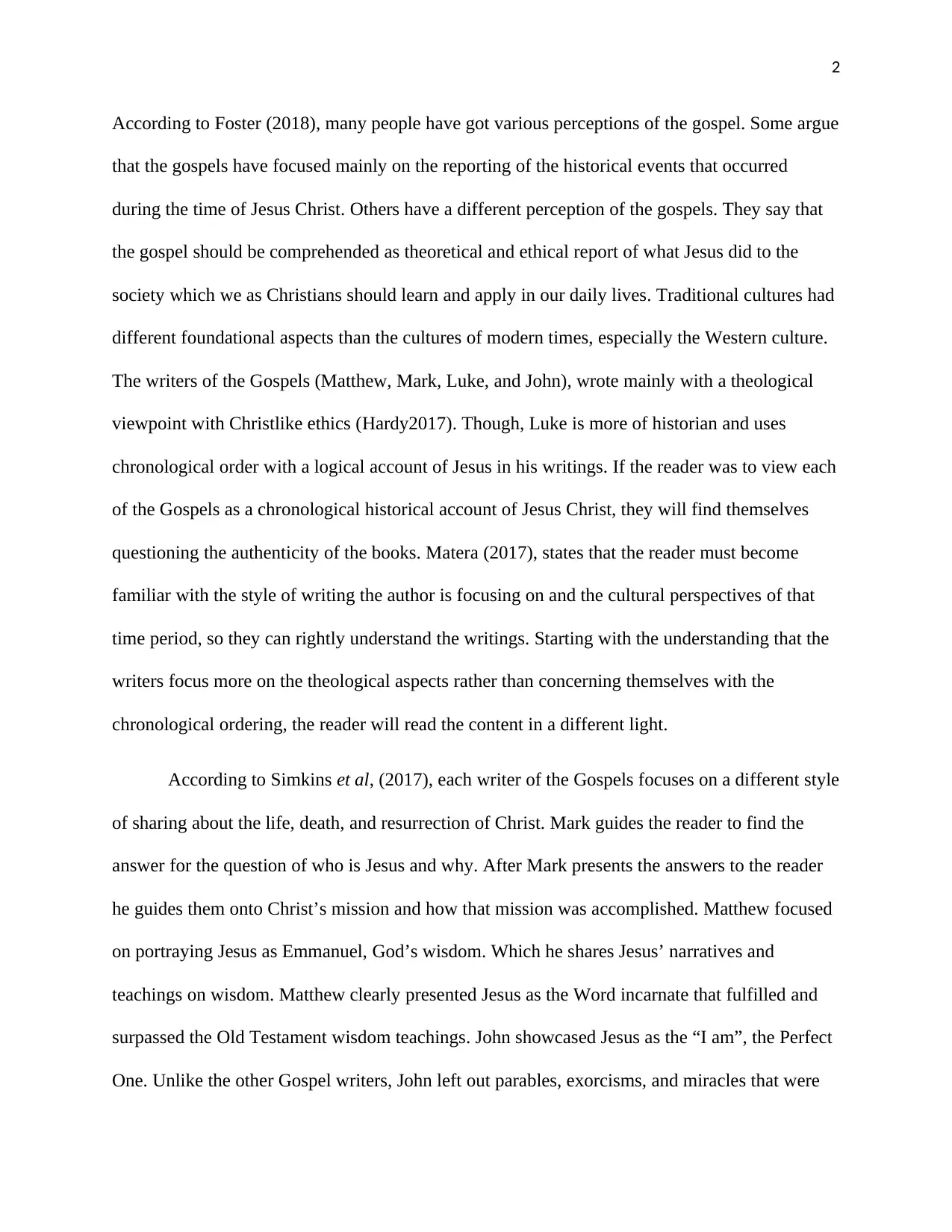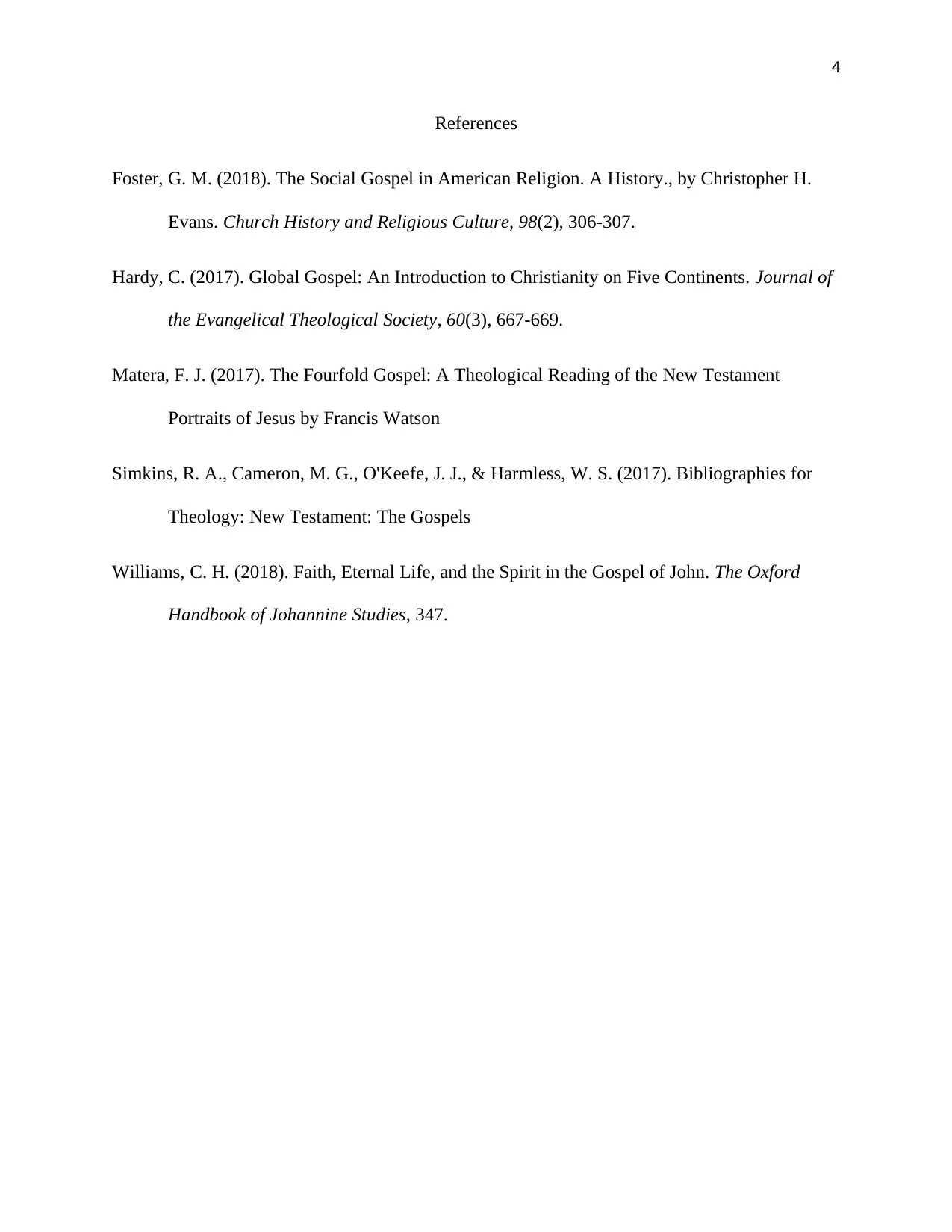Theological and Ethical Perspectives in Gospels: Analysis Essay
VerifiedAdded on 2023/06/08
|4
|761
|492
Essay
AI Summary
This essay delves into the theological and ethical dimensions of the Gospels (Matthew, Mark, Luke, and John), emphasizing that they are not merely chronological historical accounts but rather theological interpretations with Christlike ethics. The essay highlights how each Gospel writer focuses on a different style of sharing about the life, death, and resurrection of Christ. Mark focuses on answering who Jesus is, Matthew portrays Jesus as Emmanuel, John showcases Jesus as the 'I am', and Luke presents the Gospel through a historian’s perspective. It underscores the importance of understanding the author's intent, writing style, and cultural context when interpreting the Gospels, and that the history presented is correct, and the ethics are true to Christianity, the order of which it is presented is not to be taken as chronological. Desklib provides a platform for students to access similar essays and study resources for academic support.
1 out of 4









![[object Object]](/_next/static/media/star-bottom.7253800d.svg)